ABOUT KOREA
In recent years, Ikseon-dong Hanok Street has been in the spotlight as a popular place favored by young Koreans. Most of the alleys are so narrow that it is difficult to park or walk with more than three people side by side. This space, which was for working or living, has been reconstructed with modern elements into a space for new cultural consumption, providing unique enjoyment.
Located in Jongno-gu, Seoul, Ikseon-dong Hanok Street has been designated as the oldest hanok village district in Seoul. In recent years, old hanoks have been renovated into restaurants, cafés, and cute prop shops throughout the maze-like alleys. As this hanok village is widely publicized through social media, it is a must-visit attraction in Seoul.
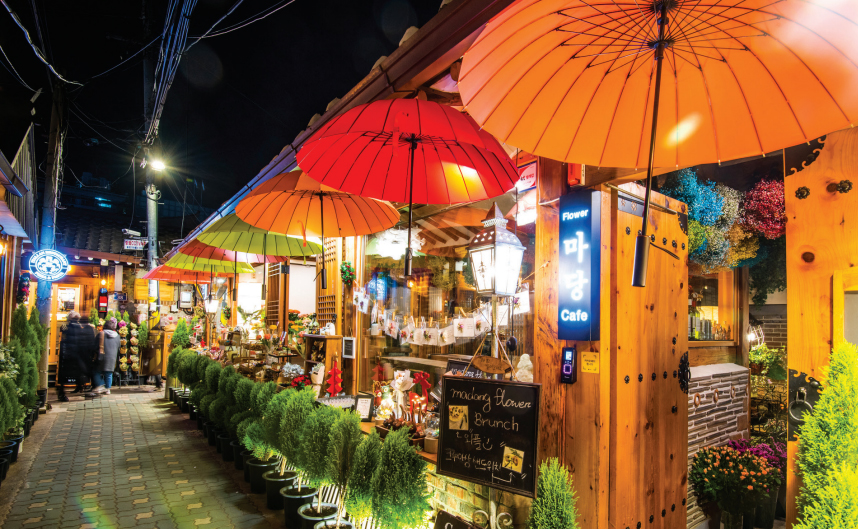
Ikseon-dong consists of maze-like alleys lined with modernized hanoks which have been renovated into cafés and restaurants with a unique atmosphere.
Seongsu-dong Street
Seongsu-dong, located in Seongdong-gu, Seoul, has been home to an industrial district with a high concentration of handmade shoe factories since the 1970s. Since the 2010s, a series of cafés with unique atmospheres and trendy fashion shops have opened in this neighborhood, with more and more digital nomads and couples visiting here for working and dating, respectively. Now it is recognized as a popular attraction.
Today, leading entertainment companies and large firms build their headquarters and art museums in the area, with more design offices and pop-up stores opening. Seongsu-dong Street is rapidly emerging as a mecca of fashion and culture.
Cultural spaces created by adding artistic touches to remodeled factory buildings are the very definition of a hip place. Factory buildings neighboring exhibition halls, cafés, and workshops make for a pleasantly peculiar cityscape. Visitors are recommended to use the Seoul Bike (Ttareungi) service to cover the vast area in a single day; you can rent one of the shared bikes and experience the nooks and crannies of the area with ease.
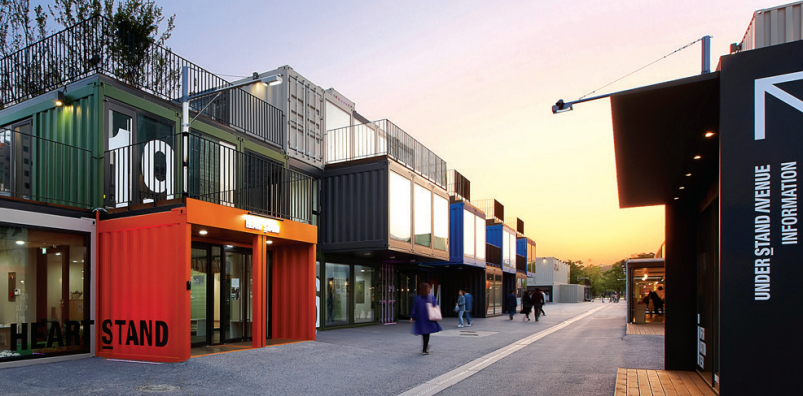
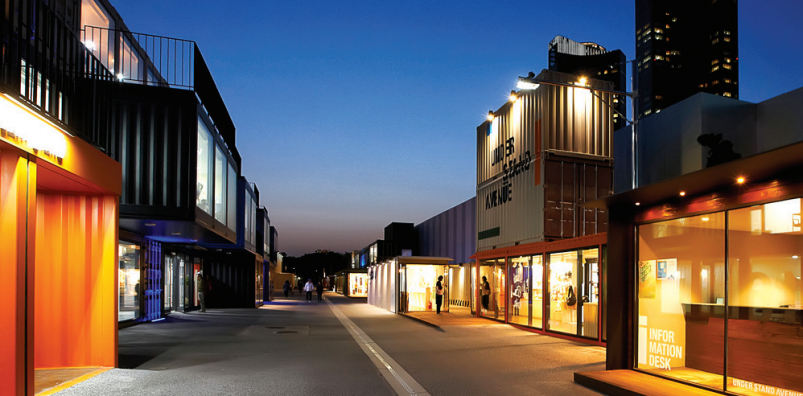
Seongsu-dong, a handmade shoe factory zone in the past, has been transformed into a popular cultural space for young artists.
Mullae-dong, Art Meets Factory Area
Mullae-dong was originally home to a cluster of steel workshops. While many are still in business, some workshops have been remodeled into coffeehouses, restaurants, galleries, and workshops for artists and crafters in recent years, forming what Koreans currently know as the Mullae Art Village.
The area has consolidated itself as a major art-producing area represented by the Mullae Art Village, Mullae Art Fair, Mullae Art Festival, and Mullae Metal City Festival.
Nopo or Old Stores: Co-existence of the Old and New
Seoul is a history book in itself. It is a colorful tapestry preserving the 5000-year history of the Peninsula, including the Joseon and Goryeo dynasties. In the city, each and every alleyway and even trees on the street carry historical significance.
Such significance is exemplified by old stores (called “nopo” in Korean), as they are living proof of the turbulent history of the city. The old patrons of these stores, which have served customers at the same locations for over five decades, return to these places with their sons and daughters.
Eulji-ro, or “Hip-jiro”
Eulji-ro Street, located in Jung-gu, Seoul, was thought of as a desolate neighborhood a few years ago. This is because it was packed with shabby shops, such as print shops and hardware stores, which are symbols of the old industry. Recently, however, this street has emerged as a new cultural space. In particular, the desolateness of Eulji-ro, where time seems to stand still, has rather stimulated analog sentiments and memories due to the recent “Newtro” craze. This serves as a driving force for the transformation of the obsolete space into a new cultural product. Cafés, pubs, and culture complexes targeting young people’s tastes are combined with the old print shops and hardware stores, creating a heterogeneous but unique aura.
Myeong-dong Returns as the Leading Commercial District
Myeong-dong is regaining its reputation as the leading commercial district of Seoul. International travelers visiting Korea flock to Myeong-dong for a simple reason; the area offers hotels over a wide price range, as well as convenient access to restaurants, stores, and tourist attractions.
Another distinctive feature of Myeong-dong is the food stalls on the streets. Dalgona (a sugar-based snack featured in the Netflix series Squid Games), fruits in cups, egg bread, and other easily accessible stall snacks add to the atmosphere of the area as the No. 1 tourist stop in Seoul. In fact, travelers from other countries enjoying dalgona on the street have become quite a common sight.
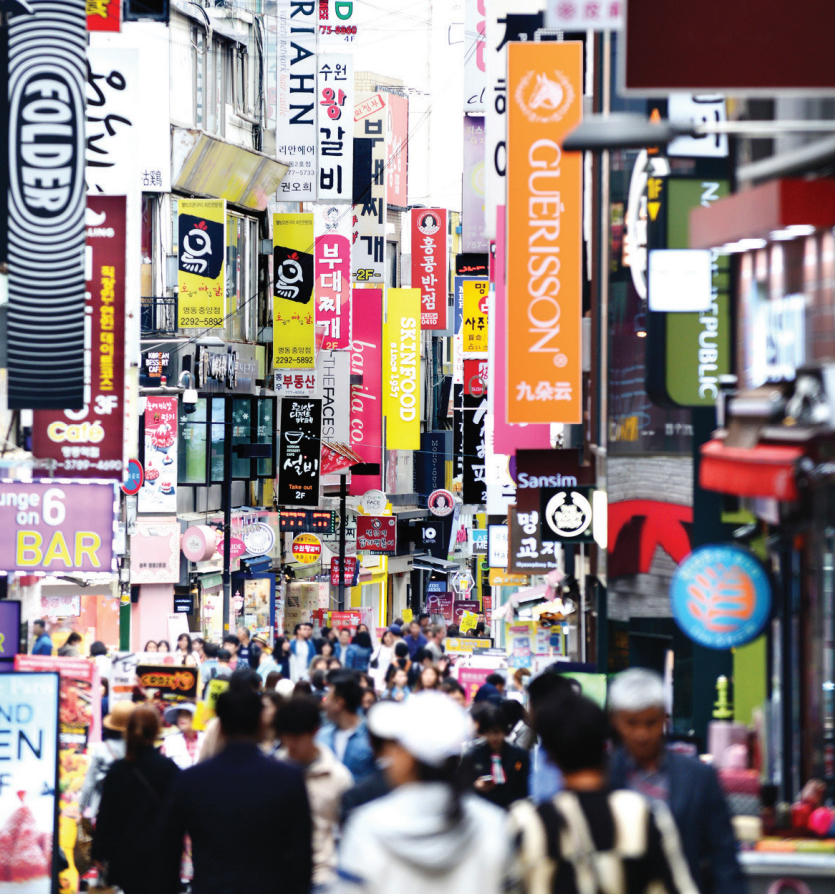
Myeong-dong, the Center of Tourism and Shopping
Myeong-dong has been Seoul’s cultural, financial, and tourist center in modern times as a special tourist zone.
Luxury Fashion Street, Cheongdam-dong
The Luxury Fashion Street in Cheongdam-dong is reclaiming its renown as the mecca of high-end shopping, attracting designer item enthusiasts. Chanel, Louis Vuitton, Dior, and other high-end fashion brands have prepared flashy spectacles for shoppers, with other brands such as Dolce & Gabbana opening shops in the area.
Cheongdam-dong has been revitalized as a commercial area along with the “Apgujeong Rodeo” area.
Hwangnidan Street, Gyeongju
Hwangnidan Street is located in Gyeongju, a city that served as Silla’s capital for a thousand years. Formed in 2015, Hwangnidan Street changed the face of tourism in Gyeongju as a place where visitors can enjoy the past and the present in one place. In fact, the street has succeeded in taking the tourism leader status from the Bomun Tourist Complex.
The street is home to numerous hanok accommodations, coffeehouses and restaurants, souvenir stores, and hanbok rental shops. It is also within walking distance from Daereungwon Ancient Tomb Complex (Cheonmachong), Cheomseongdae Observatory (Archaeological Area in Eastern Gyeongju), Donggung Palace, Wolji Pond, and Gyocheon Village.
The street has also been set up with vibrant nightlife for tourists looking for places to enjoy Gyeongju and good photo spots. In fact, some say that Cheomseongdae Observatory looks more beautiful at night when it is surrounded by light from the night lights. The view reflected on the Wolji Pond shows a beauty that transcends time and space.
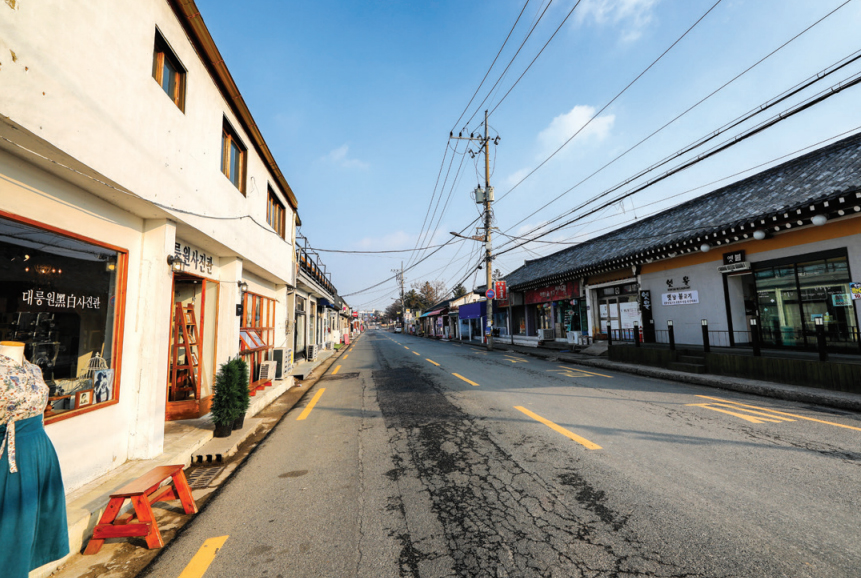
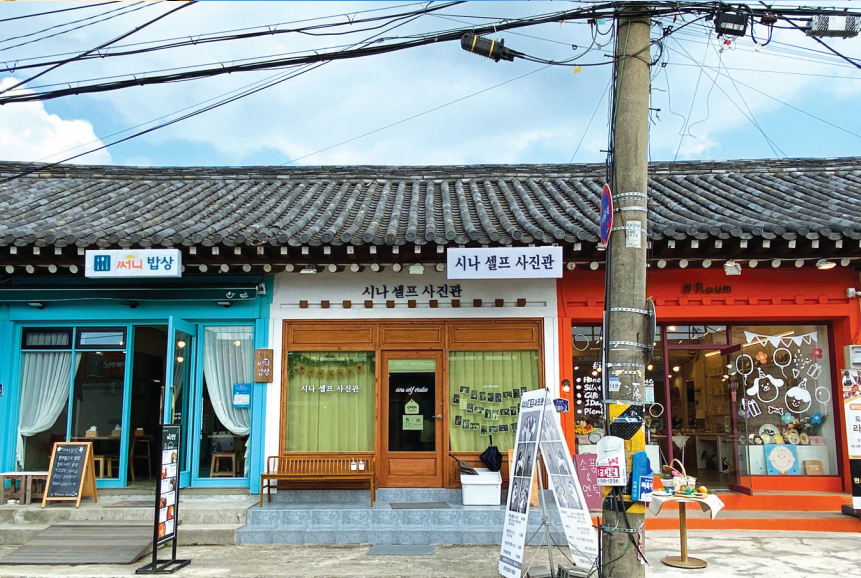
Hwangnidan Street, Gyeongju
Hwangnidan Street, where old buildings were located, has become a hot spot that boasts the unique attraction of Gyeongju through a regeneration project.
Coin Karaoke
For Koreans, karaoke (or noraebang in Korean) has been a place for workers to unwind and consolidate bonds among colleagues by singing at the top of their lungs after office dinners. In addition, more and more people visit karaoke parlors when they simply want to sing and take some time for themselves.
Coin karaoke is a special type of karaoke parlor where you can sing as much as you want as long as you have coins to spare. Unlike conventional Korean karaoke, you are not required to rent the booth for an entire hour. Instead, you can just sing a song or two for a very low price.
The increased number of people “soloing” at karaoke parlors has also led to the development of karaoke programs equipped with more fun features.
“PC Bangs” Transformation to Multi-Purpose Cultural Facilities
According to various statistics, Korea is one of the top-ranked countries in terms of internet penetration. In addition, Koreans are known for their love of doing things fast. In the same spirit, Korean consumers focus on speed when choosing their internet and mobile provider, with a large percentage of Koreans already using 5G services. Given this information, it may seem strange that PC bangs (Korean-style internet cafés) are still popular among Koreans when they can always play games at home. The main benefits of PC bangs include 24/7 access to high-end PCs and hyper-speed internet.
The PC bang has become a multi-purpose cultural facility that offers not only games but also entertainment, rest, and a wide selection of other services. Many Koreans visit a PC bang with friends to play games and deepen their bond, and order food to enjoy while playing games using food delivery apps.
Baseball Stadiums in Korea
Koreans go to baseball stadiums not only for the games but also for the famous chicken-beer combo. A baseball game consists of nine innings, which can be quite long. As such, rather than concentrating on every second of the game, spectators have grown accustomed to sharing conversations with friends over chicken and beer.
In fact, the chicken-beer combo (or chimaek) is one of the foods that represent Korean culture. Therefore, people enjoying the games and the chicken-beer combo (which also serves as supper on many occasions) have become quite a common sight at baseball stadiums.
The stadiums also offer various snacks to fill visitors’ mouths and stomachs.
Clubs in Hongdae
Clubs in the Hongdae area are popular among young Koreans as places to enjoy dance and music. These clubs symbolize the free underground subculture of the area.
In the mid and late 1990s, DJs, hip-hop artists, and b-boys led the club culture in the area, and youngsters used to drink beer and watch their performances in the clubs.
This subculture used to be confined to a relatively small number of enthusiasts. However, into the 2000s, it expanded to cover a larger fan base. The independent bands based in Hongdae clubs also contributed to the unique atmosphere of the area.
Many travelers from other countries also put Hongdae clubs in their itineraries. On weekends, Hongdae streets are busy with people enjoying the area’s club culture all night, and a large percentage of them are foreigners.
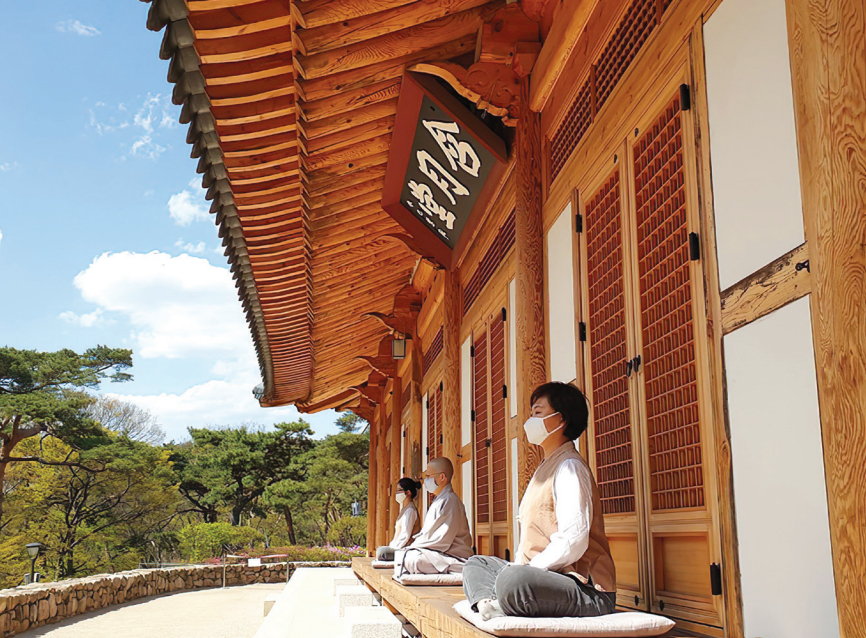
Temple Stay: an Experience of Tranquility and Rest
This representative traditional culture experience program offers the historical and cultural experience of 1,700 years of Korean Buddhism in a mountain temple.
Temple Stay
Temple stay is a cultural tourism program where visitors stay at traditional temples and experience Korea's Buddhist and traditional cultures. In addition, temples run temple stay programs for foreigners, offering easier access to Korea’s Buddhist culture.
Starting with the Jikjisa Temple in 2002, around 120 leading temples around the country have launched their own temple stay programs. Choose the temple to stay in and book a program, and you are all set to go.
Taekwondowon, Muju
On September 4, 2014, Taekwondowon began its operation in Muju, Jeollabuk-do, to uphold the status of Korea as the originator of Taekwondo.
Built on a 2,314 m2 area, the center consists of sections with different themes: activity spaces (Challenge), training facilities (Growth), and exhibition halls (Attainment). It also has an observatory with a panoramic view of the facility.
Taekwondowon offers Taekwondo programs and performances as well as accommodations. It is conveniently located around tourist attractions featuring Korean cultural activities, such as Hanok Villages in Jeonju and Cheonghak-dong.
The facility is visited by Taekwondo associations and trainees across the world, for which it has been lauded as having succeeded in catching two birds with one stone: elevating Korea’s standing on the global stage and attracting tourists to the country.
Seoul International Fireworks Festival
One of the perks of living in Seoul is the chance to see the beautiful fireworks over the Hangang River at night. After a long hiatus due to COVID-19, Seoul International Fireworks Festival returned on October 8, 2022, at the Yeouido Hangang Park in Seoul with more than a million visitors.
Launched in 2000, Seoul International Fireworks Festival has seen artists from across the country showcasing their firework pieces.
Among the numerous fireworks with vastly diverse colors and striking patterns, the Korean team captivated audiences with unique shapes, colors, and movements. In addition, the fireworks are accompanied by laser shows and music, creating musical-like scenes that deeply resonate with people’s hearts.
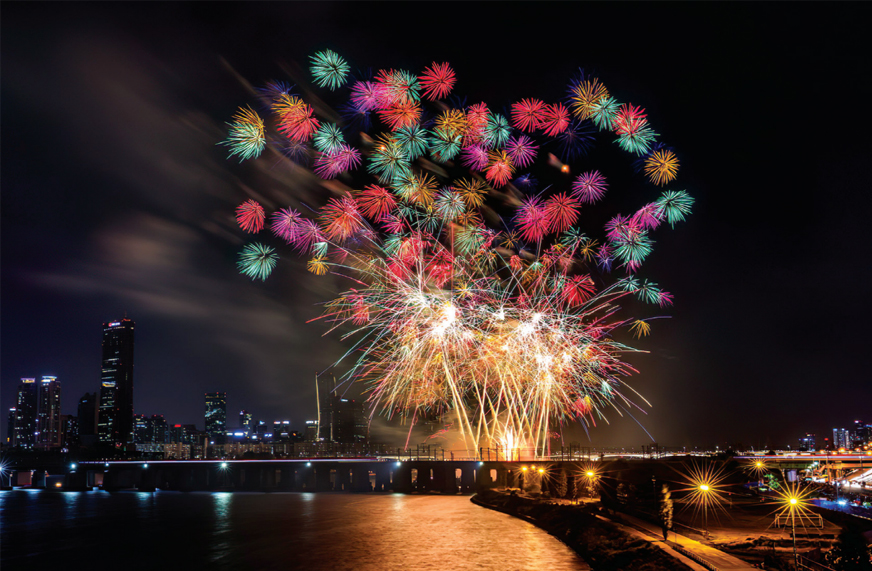
Seoul International Fireworks Festival
This is the best fireworks show in Asia, where worldclass fireworks companies are invited every year to show off fantastic fireworks in the night sky of Yeouido.
Medical Tourism
Korea boasts world-class medical services. Gangnam in Seoul is a mecca of medical tourism, with the number of medical tourists reaching more than 130,000 (as of 2019). Based on excellent medical technology, manpower, and high-tech facilities, Gangnam provides the best medical services, featuring an even distribution of medical institutions such as general hospitals, medical centers, clinics, and others, all of which are engaged in a wide range of disciplines such as cosmetic surgery and dermatology.
The street from Apgujeong Station to Eulji Hospital Sageori (intersection) intensively consists of a cluster of medical institutions involved in cosmetic surgery and dermatology. The growing interest in K-beauty, as well as in the Korean Wave, has contributed to the increasing number of medical tourists who visit this zone for plastic surgery and cosmetic procedures.
Daegu has been a hub of the distribution of medicinal herbs around the world for over 300 years. In recent years, it has been visited by more tourists from China and Southeast Asia to be treated for respiratory diseases caused by fine dust. The Herbal Medical Experience Town operates different experience programs, through which people can experience not only oriental medicine through the acupoints acupressure thermotherapy bed and body composition analysis, but also aesthetic medicine through diagnoses of skin aging and scalp conditions and other services.

